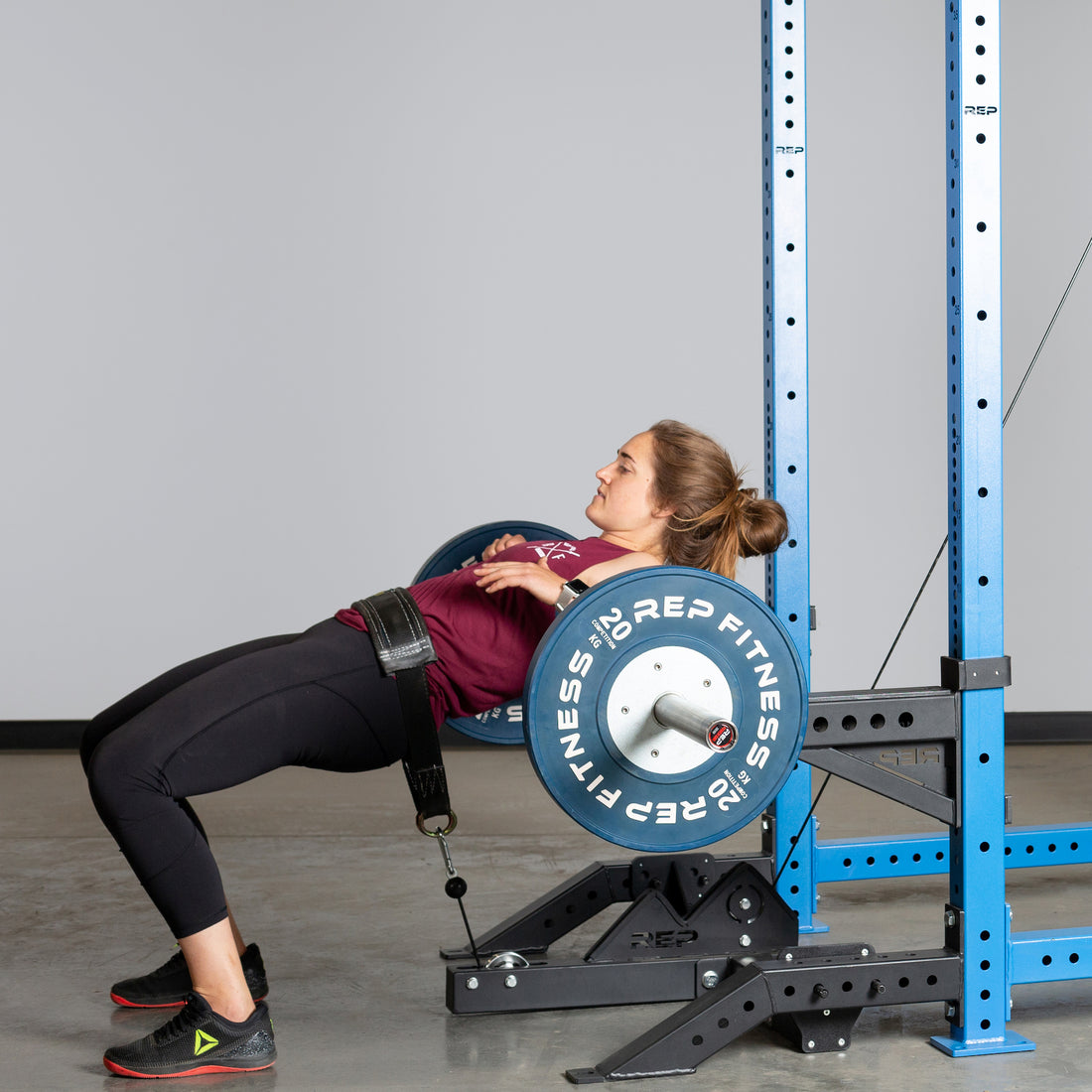
Dip Belts aren't just for dips.
Its name suggests it’s just for upper-body exercises, but a Dip Belt is a small, easy-to-use, inexpensive full-body blaster.
It’s a smart staple in any home gym, because it’s an immensely versatile and effective tool -- not just for adding difficulty to bodyweight exercises, but also for allowing you to train your legs without loading the spine and getting the most out of your power rack.
Here’s a closer look at this often-underrated piece of equipment and how you can get the most out of it. Hint: It’s way more than just dips.
What is a Dip Belt?

A Dip Belt is different than a typically Lifting Belt. A Lifting Belt has buckles or a lever to cinch on your waist so there's enough pressure (but not too much) to brace against when lifting heavy weights. A Dip Belt is not worn tightly against your waist, nor is it intended to use to assist with bracing. It connects to a chain that then attaches to a weight or cable, so you can add resistance.
Weighted Bodyweight Exercises with a Dip Belt

When bodyweight exercises, like pull-ups and dips, start feeling too easy, slip into a Dip Belt (it takes seconds), connect to a weight plate, kettlebell, or even a dumbbell (the latter takes a little finessing, but it’s doable), and instantly level up your workout.
Here are some bodyweight exercises you can make more challenging with a Dip Belt.
- Weighted dips on a Dip Attachment.
- Weighted pull-ups, chin-ups, and muscle-ups. If you can do more than 10 reps without weight, throw on a load, my (gender-neutral) dude.
- Weighted push-ups. Elevate your arms and feet on boxes or benches to lift the weight off the ground.
- Weighted pull-ups and dips on Gymnastic Rings.
- Weighted squats standing on two boxes or a stack of bumper plates.
- Weighted walks or marches. Yes, take a walk or march in place with the weight hanging between your legs. Try it for five minutes and expect to feel the burn.
- Weighted calf raises or donkey calf raises (that's where you do calf raises while you hinge at the hips).
Cable Exercises With a Dip Belt
You can also attach the belt squat to a cable machine, using a carabiner, to add resistance to various exercises. Try it with:
- Alternating forward lunges
- Jump squats
- Cable Dip Belt kneeling squats
Specialty Exercises With a Dip Belt

A Dip Belt isn’t only for the super strong lifters who can do 10-plus pull-ups. It is also compatible with the Belt Squat Attachment, which is great for lifters of all levels. For newbies and people with limitations, it allows you to train your legs without loading your spine or using your upper body. For advanced lifters, it’s another way to blast your legs.
Belt squats allow you to add volume and variation to your squat training and train around upper body injuries or limitations (shoulder, back, elbow, wrist) -- and they offer a different challenge than traditional squatting, due to the constant resistance.
To achieve proper depth, make sure that you have the correct length belt and the chain set up correctly. If your belt is too long, you can set up plates or a platform to obtain the right height for more effective movement. Use a Cable Catch Attachment to allow you to start from the top of your squat. Starting from the bottom is not difficult when lifting sub-maximal weight, so this attachment comes in handy when you are pushing your limits.
You can also use a Belt Squat Attachment, Dip Belt, and Dip Handles to do weighted dips, hip thrusts, weighted calf raises, weighted pull-ups, and more.



NEWSLETTER SIGNUP
Product launch information, promotions, blogs, and REP news.







